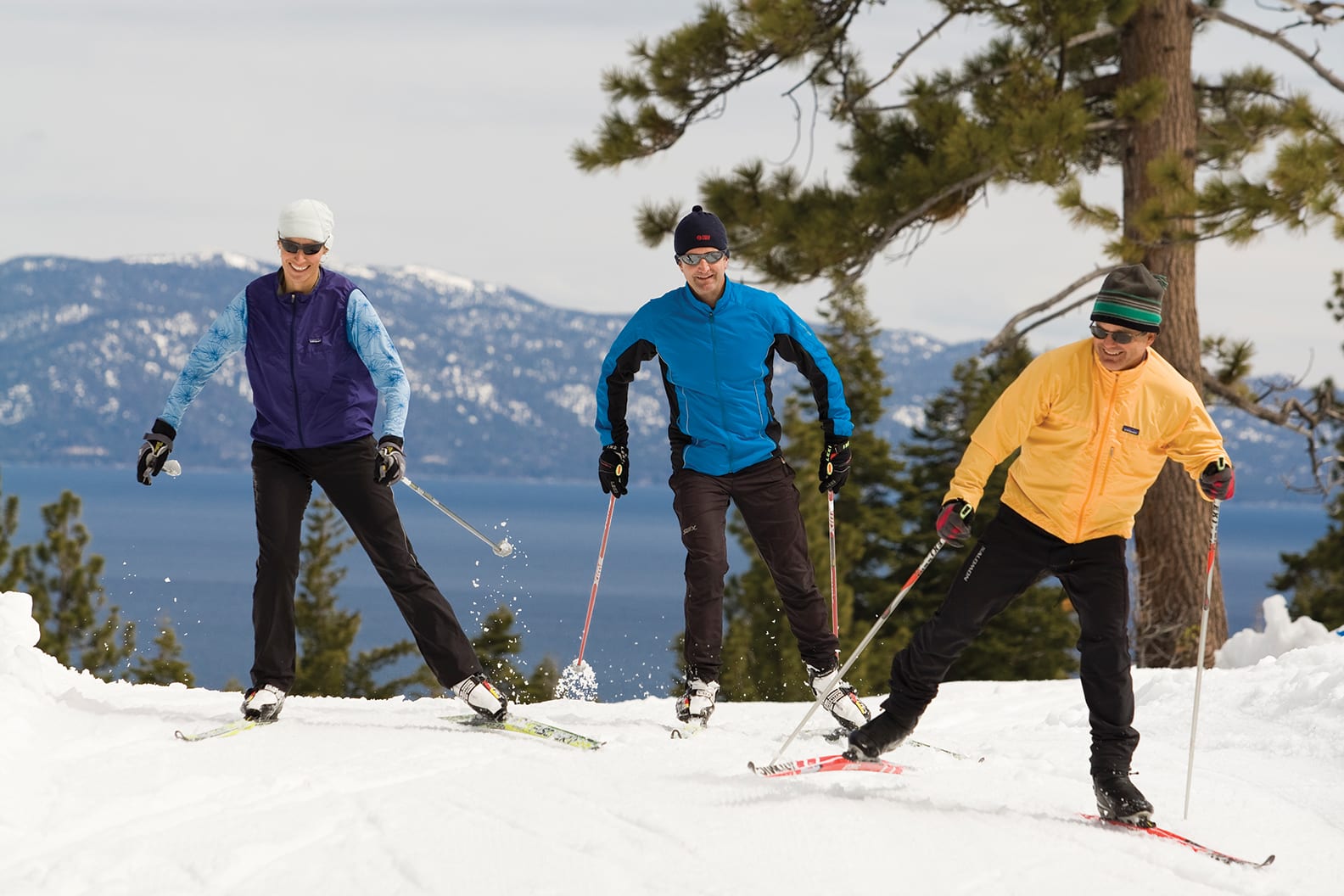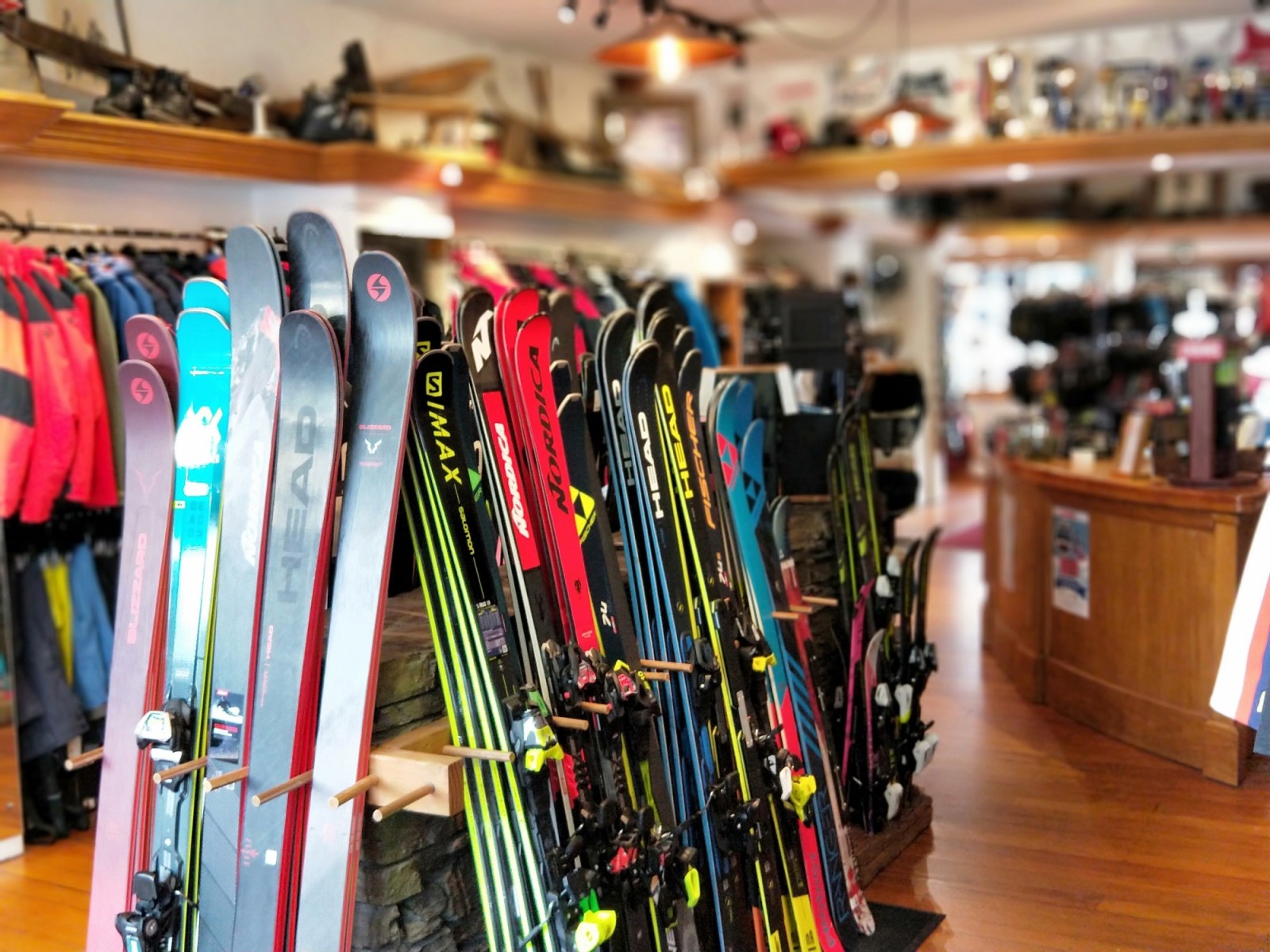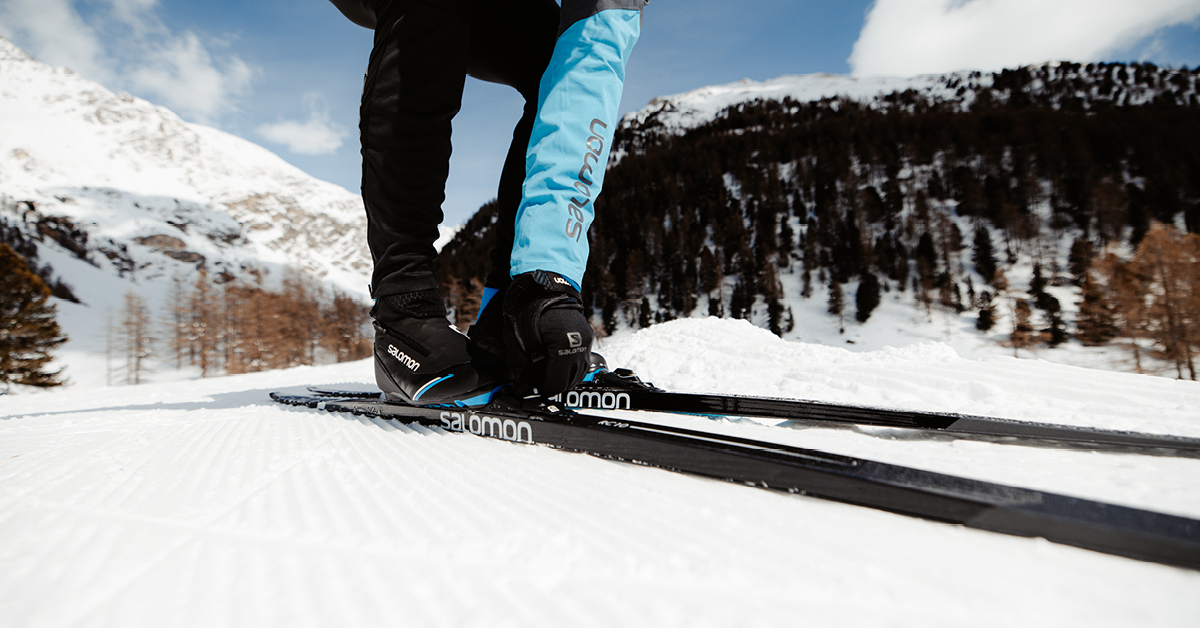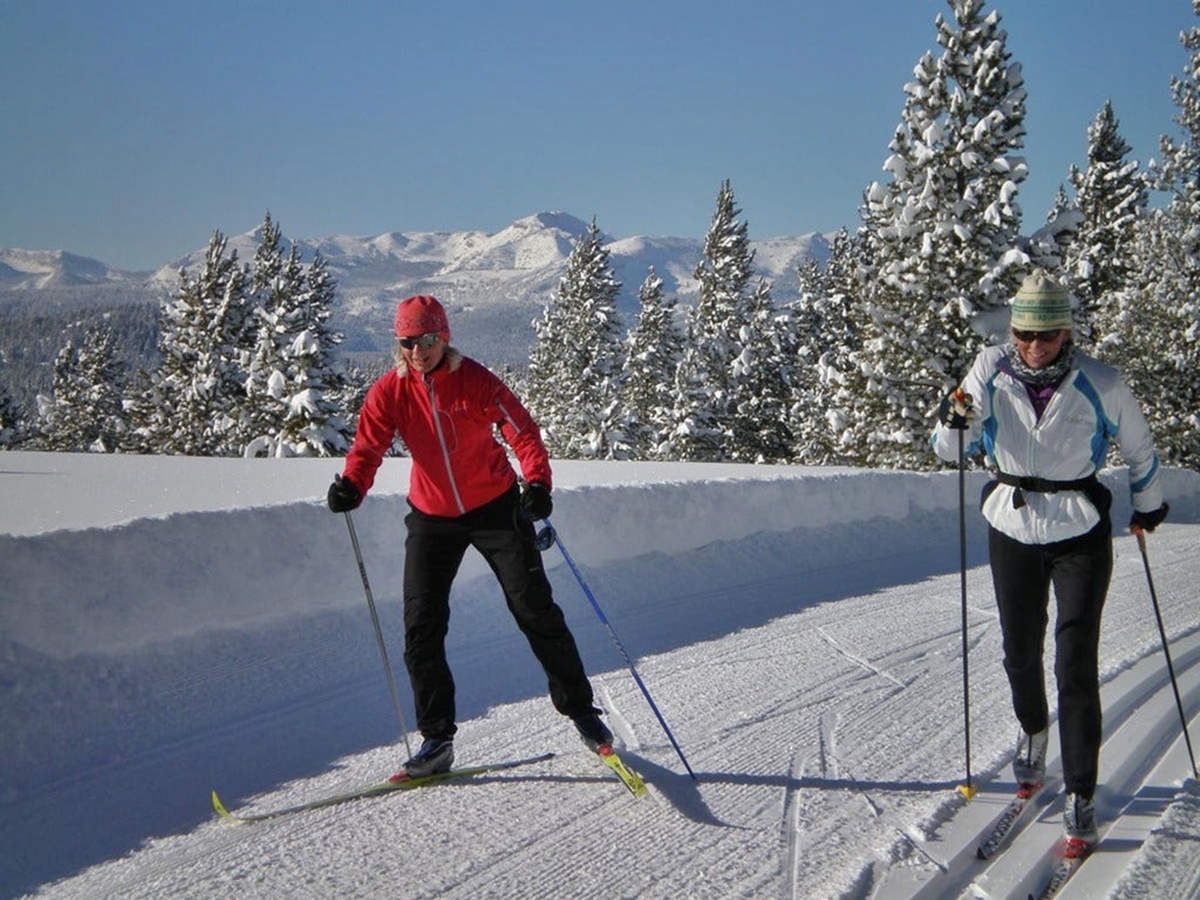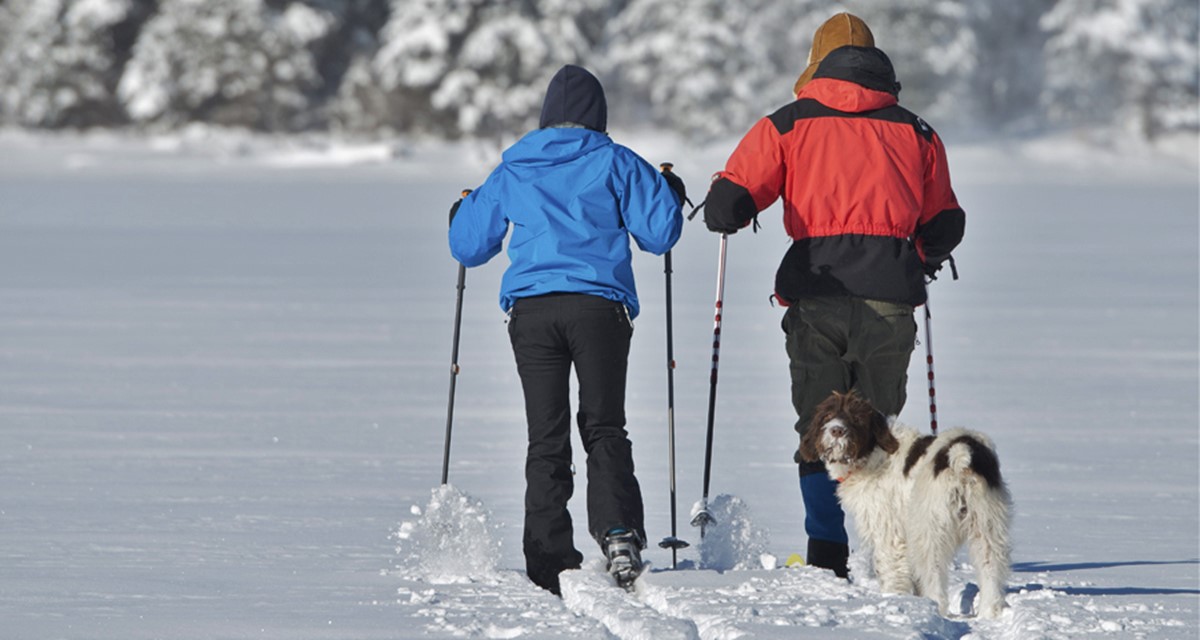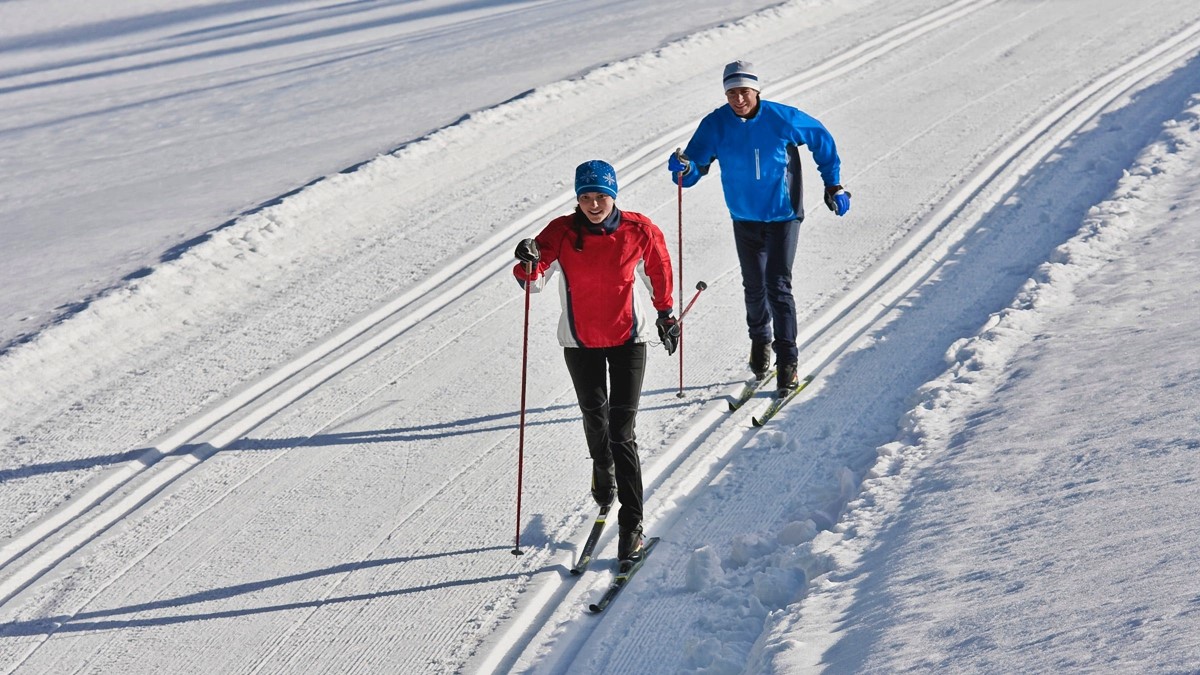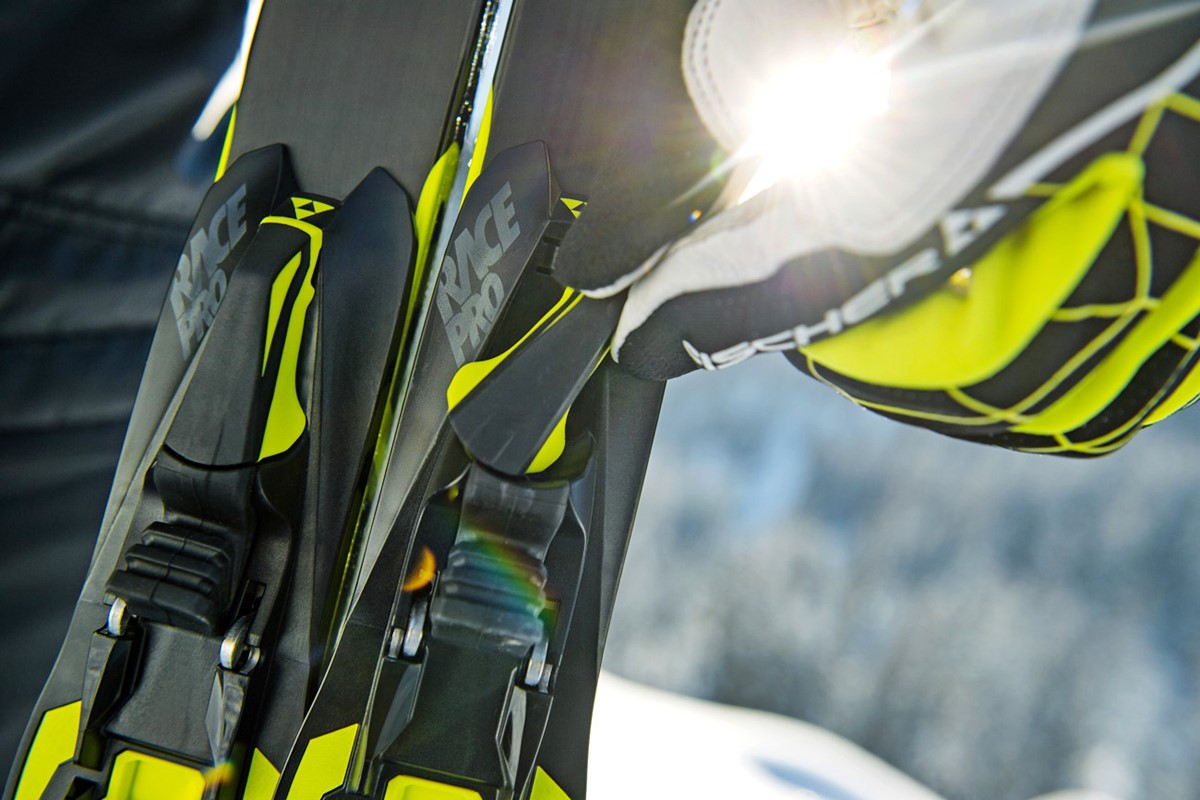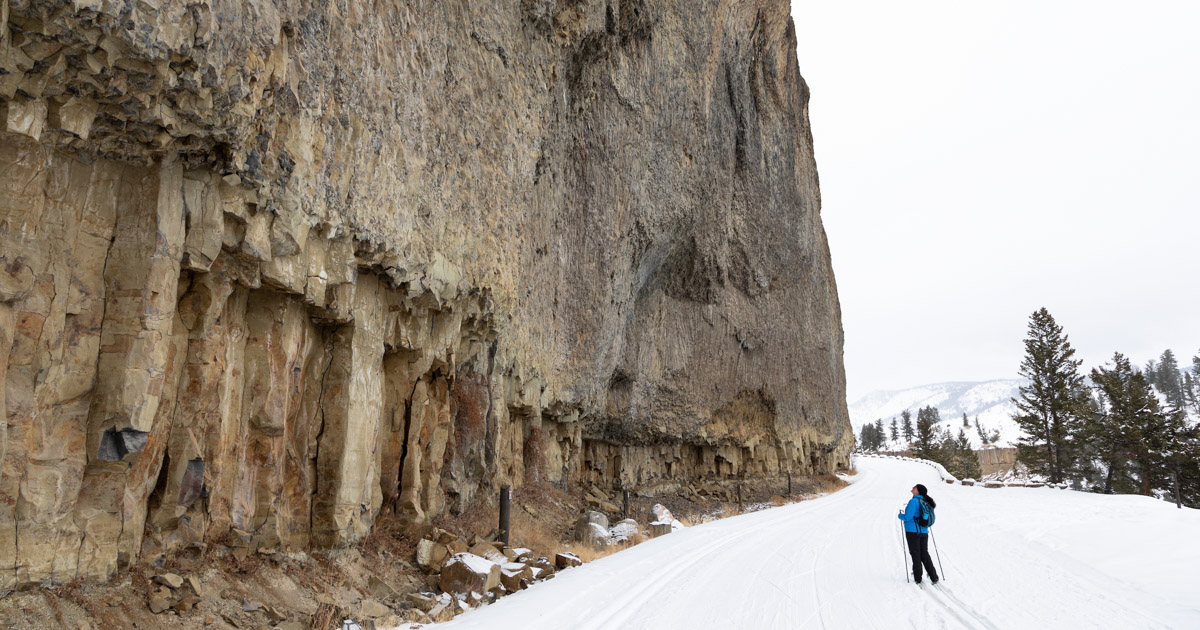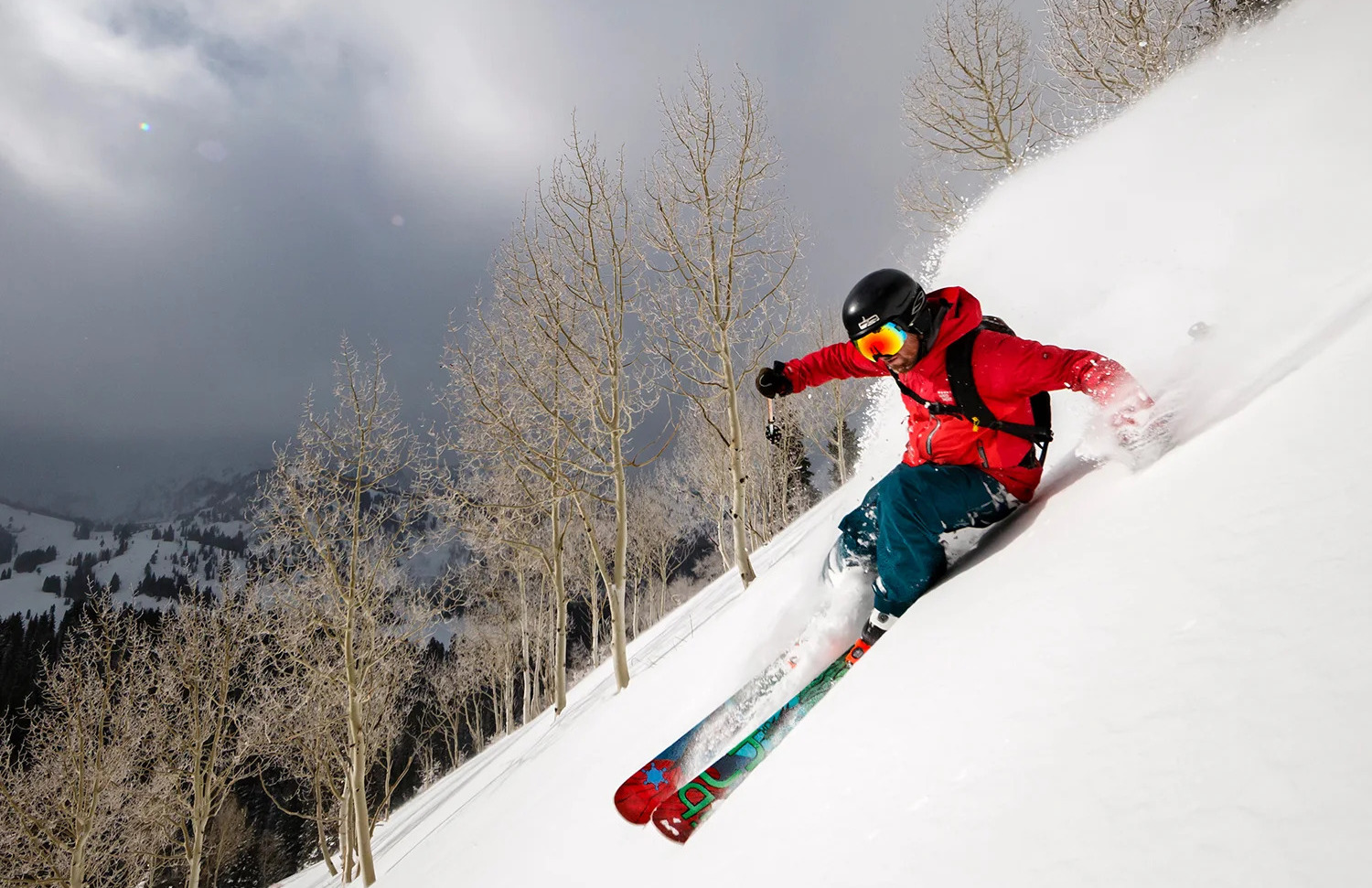Home>Misc>Featured>Where Did Cross Country Skiing Originated?
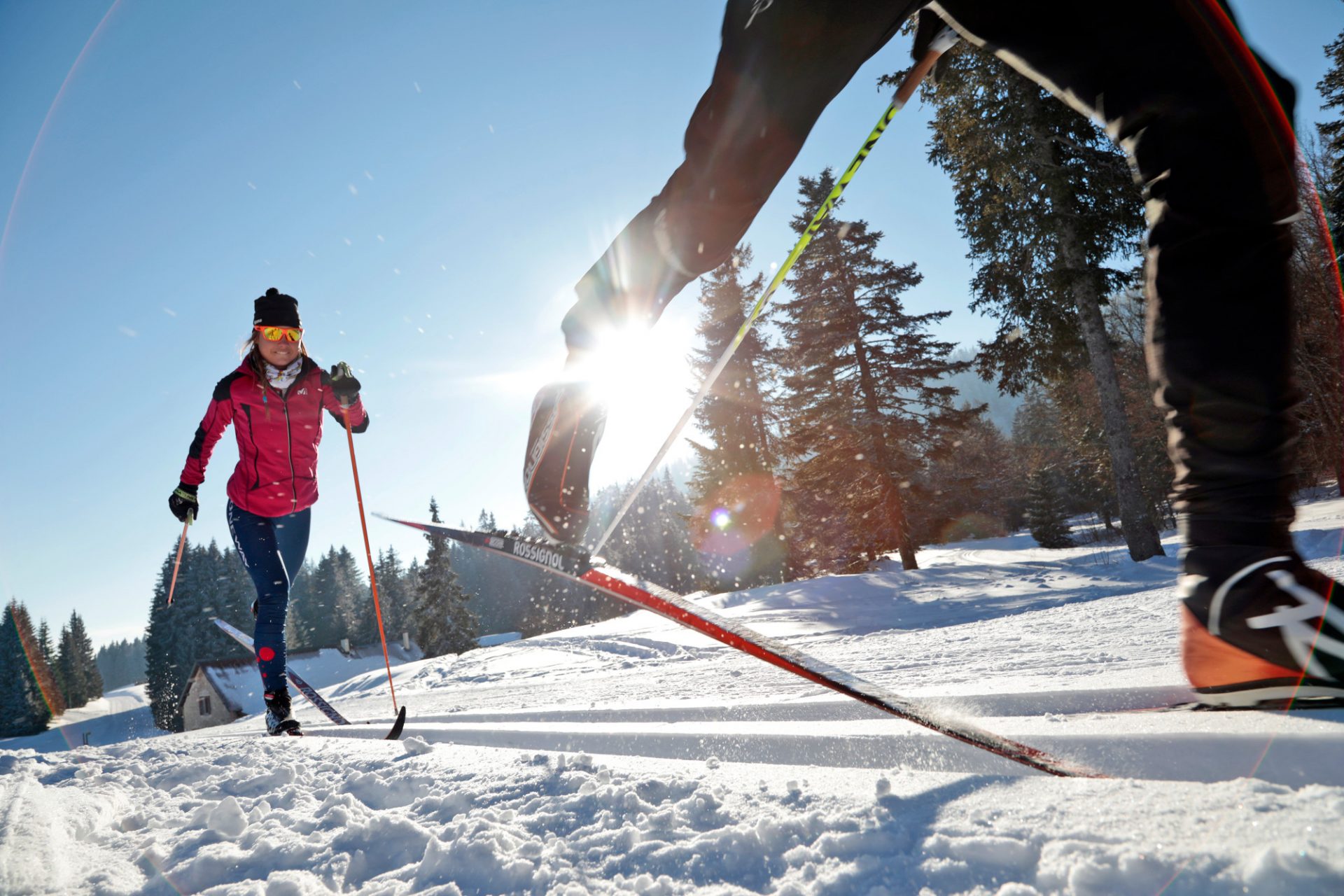

Featured
Where Did Cross Country Skiing Originated?
Modified: August 19, 2023
Discover the origins of featured cross-country skiing and its rich history. Uncover the intriguing beginnings behind this popular winter sport.
Introduction
Cross-country skiing is a popular winter sport that combines cardiovascular exercise, breathtaking landscapes, and a deep sense of connection with nature. As the skier glides gracefully through the snowy terrain, the rhythmic motion of cross-country skiing creates a harmonious symphony of movement and nature.
But have you ever wondered where this exhilarating sport originated? Cross-country skiing has a rich history that dates back thousands of years, rooted in the necessity for transportation and survival in snowy regions. Let us delve into the fascinating origins of cross-country skiing and explore its evolution into the beloved sport we know today.
The origins of cross-country skiing can be traced back to ancient times when humans first migrated to colder regions with long winters. It was born out of necessity as a means of travel and transportation across snow-covered landscapes. The Scandinavian countries, particularly Norway, Sweden, and Finland, played a vital role in the development and popularization of cross-country skiing.
In these Nordic countries, the harsh winter conditions presented immense challenges for survival and daily life. The need to travel quickly and efficiently over long distances forced the people of these regions to develop efficient skiing techniques. These techniques involved using long and narrow skis to distribute the weight evenly over the snow, allowing the skier to glide smoothly along the surface.
Over the centuries, cross-country skiing became deeply ingrained in the culture and way of life in the Nordic regions. It served as a vital method of transportation, connecting isolated communities and enabling trade and communication. The sport also became a means of recreation, with Nordic communities organizing skiing competitions and festivals to celebrate their rich cultural heritage and to foster a sense of community.
The origins of cross-country skiing are not limited to the Nordic countries, though. Historical evidence suggests that similar skiing techniques were also developed independently in other parts of the world. In the Altay region of China, stone carvings dating back to 6000 BCE depict skiers using equipment remarkably similar to modern cross-country skis. Similarly, rock paintings in the northernmost regions of Russia also portray scenes of skiing.
Despite the independent developments of skiing techniques in various parts of the world, the influence of the Nordic countries in the evolution and popularization of cross-country skiing cannot be underestimated. The techniques and equipment used in modern cross-country skiing have their roots in the innovations and traditions of these Nordic cultures.
As we embark on this journey exploring the origins of cross-country skiing, we will uncover the historical evidence and artifacts that provide insights into the early roots of the sport. We will also delve into the Scandinavian influence that shaped the development of cross-country skiing techniques and equipment. So, strap on your skis and let us traverse the snowy path of history and discover where cross-country skiing truly originated.
Origins of Cross Country Skiing
The origins of cross-country skiing can be traced back thousands of years to regions with long, harsh winters. In these snowy landscapes, the need for efficient travel and transportation led to the development of skiing techniques that eventually evolved into the sport we know today.
The earliest evidence of skiing dates back to at least 6000 BCE. Stone carvings found in the Altay region of China depict skiers gliding across the snow using equipment remarkably similar to modern cross-country skis. These carvings suggest that skiing was not only a means of transportation, but also a form of recreation and sport.
Similarly, rock paintings in the northernmost regions of Russia also depict scenes of skiing. These paintings date back to around 4000 BCE and provide further evidence of early skiing traditions in different parts of the world.
In Scandinavia, particularly in Norway, Sweden, and Finland, skiing played a crucial role in the daily lives of people living in snowy regions. The harsh winter conditions made travel on foot difficult, and skiing became a necessity for crossing long distances efficiently.
The Sami people, an indigenous group inhabiting the northern regions of Scandinavia, are believed to have been among the first to develop skiing techniques. They used skis made from wood with animal hide bindings, allowing them to traverse the snowy terrain with ease. Skiing was not only a means of transportation for the Sami people but also a way to hunt, gather food, and carry out daily activities.
As the skiing techniques of the Sami people spread, other cultures in Scandinavia began adopting and refining these techniques. Over time, skis became longer and narrower, allowing for greater speed and efficiency. Bindings were improved, providing better control and stability.
The development of cross-country skiing techniques coincided with the growth of trade and communication networks in Scandinavia. Skiing became crucial for connecting isolated communities and enabling trade routes through deep snow-covered landscapes.
As skiing became ingrained in the culture and way of life in the Nordic regions, it also began to evolve as a form of recreation. Skiing competitions and festivals were organized to celebrate the winter season and the rich cultural heritage of the Nordic countries. These events further popularized skiing and laid the foundation for the modern sport of cross-country skiing.
In the next section, we will explore the historical evidence and artifacts that provide insights into the early roots of cross-country skiing. We will uncover how these ancient skiing techniques evolved over time and examine the influence of the Nordic cultures in shaping the sport we know today.
Historical Evidence and Artifacts
The origins of cross-country skiing can be traced back through various historical evidence and artifacts that provide valuable insights into the early roots of the sport. These remnants of the past offer a glimpse into the skiing practices of ancient civilizations and contribute to our understanding of how skiing evolved over time.
One remarkable piece of historical evidence comes from the Altay region of China, where stone carvings dating back to 6000 BCE depict skiers using equipment strikingly similar to modern cross-country skis. These carvings depict skiers with long, narrow skis and poles, gliding smoothly across the snow. The carvings not only reveal the existence of early skiing techniques but also suggest that skiing was a significant part of the cultural and recreational activities of the time.
In addition to the carvings in China, rock paintings found in the northern regions of Russia provide further evidence of early skiing traditions. These paintings, dating back to around 4000 BCE, depict scenes of people on skis. These skiers are shown using poles for balance and propulsion, much like modern cross-country skiing techniques. The rock paintings attest to the long-standing history of skiing in various parts of the world, reinforcing the idea that skiing was an essential means of transportation and recreation in snowy regions.
Furthermore, artifacts discovered in Scandinavia shed light on the development and use of skiing centuries ago. One such artifact is the Kalvträskskidan ski, found in Sweden and dated between 2000 and 500 BCE. This exceptionally well-preserved ski showcases the craftsmanship and design of ancient skis. The Kalvträskskidan ski is long and narrow, similar to modern cross-country skis, and is made from a single piece of wood. It is a testament to the ingenuity of our ancestors in developing skis that were lightweight, durable, and highly functional for traversing snowy landscapes.
These historical artifacts and evidence demonstrate the longstanding tradition of skiing and its importance in cultures across the globe. From the stone carvings in China to the rock paintings in Russia and the well-preserved skis found in Scandinavia, these remnants of the past provide a tangible link to our skiing ancestors. They offer glimpses into their lives and serve as a testament to the significance of skiing as a means of travel, recreation, and connection with the natural world.
In the following sections, we will delve into the influence of the Nordic cultures on the development of cross-country skiing techniques and equipment. We will explore how skiing evolved from a necessity for survival to a beloved sport embraced by cultures worldwide. By understanding the historical context and impact of skiing, we can fully appreciate the rich heritage and deep-rooted traditions that continue to shape the sport today.
Scandinavian Influence
The development and popularization of cross-country skiing owe much to the influence of the Nordic cultures, particularly in the Scandinavian countries of Norway, Sweden, and Finland. These nations have a long history of skiing, and their contributions have had a profound impact on the evolution of the sport.
Scandinavia, with its long and harsh winters, provided the perfect setting for the development of skiing as a means of transportation and survival. The Sami people, who inhabited the northern regions of Scandinavia, were among the first to develop skiing techniques. They used skis made from wood with bindings made from animal hides, enabling them to traverse the snow-covered landscapes with relative ease.
As the knowledge of skiing techniques spread, other cultures in Scandinavia began adopting and refining these practices. Skis gradually became longer and narrower, allowing for greater speed and agility on the snowy terrain. Bindings were improved, providing better control and stability.
The Scandinavian influence on cross-country skiing is evident in the equipment and techniques that are still used today. Traditional Norwegian skis, known as “langrennski,” are characterized by their long and slender design, optimized for gliding over the snow. Ski poles have also been an integral part of Nordic skiing since ancient times, used for balance and propulsion.
The Nordic countries embraced skiing not only as a means of transportation but also as a form of recreation. Skiing competitions and festivals became important cultural events, bringing communities together to celebrate their shared heritage and showcase their skiing skills. By organizing these events, the Nordic countries laid the foundation for the modern sport of cross-country skiing.
Scandinavian countries also played a pivotal role in the popularization of cross-country skiing beyond their borders. Norwegian explorers such as Fridtjof Nansen and Roald Amundsen utilized skiing expeditions in their quests for exploration and discovery, inspiring others to take up the sport. The feats of these explorers, combined with the natural beauty of the Nordic landscapes, captured the imagination of people from around the world.
Furthermore, Scandinavian immigrants who settled in North America brought their skiing traditions with them. In regions like Minnesota and Wisconsin, where winters were long and snowy, cross-country skiing became a cherished pastime and a way to stay connected to their Scandinavian roots.
The Scandinavian influence on cross-country skiing is still prominent today, with the Nordic countries consistently leading the way in the sport at the international level. Their expertise in training, technique, and equipment continues to shape the sport and inspire generations of skiers.
In the next section, we will explore the early cross-country skiing techniques and how they evolved over time. We will dive into the various styles and methods employed by skiers in the past, laying the groundwork for the diverse and dynamic sport we enjoy today.
Early Cross Country Skiing Techniques
The early development of cross-country skiing techniques was driven by the necessity for efficient travel and transportation across snowy landscapes. In regions with long winters, such as Scandinavia, various techniques and styles of skiing emerged, each with its own unique characteristics and purpose.
The Sami people, indigenous to the northern regions of Scandinavia, were among the pioneers of cross-country skiing. They developed techniques that focused on endurance and efficiency, allowing them to travel long distances across the snow-covered terrain. The Sami people used long and narrow skis, often made from wood, with flexible bindings made from animal skins. This setup distributed the weight evenly and enabled them to glide smoothly over the snow.
Another early skiing technique that emerged was known as “Diagonal Stride” or “Classic Style.” This method involved striding forward with alternating leg movements, creating a diagonal pattern. Skiers would push off with one leg while gliding forward on the other to maintain speed and momentum. Diagonal stride technique required precise weight transfer and coordination between both legs and arms for balanced propulsion.
Another early skiing technique known as “Double Poling” or “Pulka” was particularly useful for flat terrain. Skiers would use their upper body strength to propel themselves forward by pushing off the ground with both ski poles simultaneously. The poles acted as extensions of the skier’s arms, providing extra power for speed and maintaining balance.
As skiing evolved, more specialized techniques and styles developed. “Herringbone” technique, characterized by a V-shaped stride, was often used for climbing steep hills. Skiers would plant their skis at an angle outward, forming a herringbone pattern, and then push off to ascend the slope. This technique allowed skiers to gain traction and prevent sliding back down the hill.
“Skate skiing” or “Skating Style” is another modern cross-country skiing technique that emerged in the 20th century. Inspired by ice skating, skate skiing involves a side-to-side motion, pushing off from the inner edges of the skis. This technique allows for faster speeds and is commonly used in racing and more competitive settings due to its demanding nature.
Early cross-country skiing techniques laid the groundwork for the diverse range of styles and approaches we see in the sport today. From the endurance-focused techniques of the Sami people to the intricate coordination of diagonal stride and the upper body engagement of double poling, these early practices showcased the ingenuity and adaptability of skiers throughout history.
In the next section, we will explore the evolution and popularization of cross-country skiing, examining how this once-necessary mode of transportation transformed into a beloved recreational activity and competitive sport embraced by people worldwide.
Evolution and Popularization of the Sport
From its humble origins as a necessity for survival and transportation, cross-country skiing has evolved into a beloved recreational activity and competitive sport. The sport’s evolution and widespread popularity can be attributed to a combination of factors, including technological advancements, organized competitions, and the recognition of its physical and mental health benefits.
Technological advancements have played a crucial role in shaping cross-country skiing as we know it today. The development of lighter, more durable skis made from materials like fiberglass and carbon fiber has greatly enhanced performance and maneuverability. Improved bindings, boots, and poles have also contributed to the comfort and efficiency of skiers. These innovations have made the sport more accessible to a wider range of people, promoting its popularity globally.
Organized competitions have been instrumental in the popularization of cross-country skiing. The first documented skiing competition, the Holmenkollen ski festival, took place in Norway in 1892. This annual event attracts thousands of spectators and competitors from around the world, showcasing the athleticism and skill of cross-country skiers. The establishment of official governing bodies, such as the International Ski Federation (FIS), has further standardized competition rules and regulations, elevating the sport to an international level.
Recognized for its numerous health benefits, cross-country skiing has gained popularity as a form of physical and mental exercise. The cardiovascular and muscular endurance required in cross-country skiing provides an excellent full-body workout. The serene, natural surroundings of snowy landscapes also contribute to stress reduction and mental well-being. These factors have led to an increased interest in cross-country skiing as a recreational activity, attracting enthusiasts of all ages and fitness levels.
In recent years, the sport has also gained attention through major international events, such as the Winter Olympics. Cross-country skiing is one of the oldest Winter Olympic disciplines and continues to captivate audiences with its grace and excitement. The exposure gained from these high-profile competitions has further contributed to the sport’s popularity and the growth of its fan base.
Today, cross-country skiing is enjoyed by millions worldwide. Whether as a leisurely activity for exploring snowy landscapes or as a competitive sport, its appeal lies in the combination of physical exertion, connection with nature, and the joy of gliding gracefully through the snow. Ski resorts and dedicated Nordic centers offer trails and facilities for enthusiasts to engage in the sport and foster a sense of community among skiers. There are also numerous cross-country skiing clubs and organizations that provide training opportunities, coaching, and social events.
As cross-country skiing continues to evolve, it remains deeply rooted in the traditions and history of the regions where it originated. The sport’s popularity across various countries highlights its universal appeal and its ability to bring people together in a shared love for the snowy outdoors and the exhilaration of cross-country skiing.
In the final section, we will explore the spread of cross-country skiing to other regions of the world and its impact on different cultures and societies.
Spread of Cross Country Skiing to other Regions
While cross-country skiing has deep roots in the Nordic countries, its popularity and practice have spread to other regions across the globe. The appeal of gliding through snowy landscapes and the physical and mental benefits of the sport have led to its adoption and adaptation in various cultures and climates.
In North America, Scandinavian immigrants brought their skiing traditions with them, introducing cross-country skiing to regions such as Minnesota, Wisconsin, and the Canadian province of Quebec. These areas, with their long, snowy winters, provided the perfect conditions for the sport to take hold. Today, cross-country skiing is a popular winter activity in these regions, with enthusiasts exploring vast networks of trails, participating in races, and fostering a sense of community around the sport.
Similarly, countries with cold winter climates, such as Russia, Alaska, and the northern regions of Japan, have embraced cross-country skiing. In Russia, skiing has been an integral part of the culture for centuries, with the country producing many world-class athletes in the sport. In Alaska, the native Inuit people have incorporated cross-country skiing into their traditional hunting and travel methods, highlighting the adaptive nature of the sport in different landscapes and lifestyles.
Outside of these traditional skiing regions, countries with less snowfall have also found ways to engage in cross-country skiing. Artificial snow and grooming machines have made it possible to create skiing trails in areas with milder winters. Ski resorts and parks in countries like Australia, New Zealand, and parts of the United States have adopted cross-country skiing, offering enthusiasts a chance to experience the sport despite the climate challenges.
In recent decades, cross-country skiing has gained popularity in countries where winter sports were previously less prevalent. China, for instance, has been investing in winter sports development ahead of the 2022 Winter Olympics. Cross-country skiing is seeing increased participation and interest as the country focuses on promoting winter sports to its population.
The spread of cross-country skiing to other regions has not only brought the joy of the sport to communities worldwide, but it has also provided opportunities for cultural exchange and growth. Ski resorts and Nordic centers in various countries now offer lessons, equipment rentals, and guided tours to introduce newcomers to the sport. International events and competitions further foster global connections, as athletes from different nations come together to compete and share their love for cross-country skiing.
As cross-country skiing continues to expand its reach, embracing the sport’s history, traditions, and techniques from different cultures further enriches its diversity and appeal. The adaptive nature of cross-country skiing allows it to transcend geographical boundaries, bringing people together through a shared love for the sport, regardless of their backgrounds or the climates in which they reside.
In the final section, we will conclude our exploration of the origins and spread of cross-country skiing and reflect on the enduring legacy and future of this captivating winter sport.
Conclusion
As we conclude our exploration of the origins, evolution, and spread of cross-country skiing, we have gained a deeper appreciation for the rich history and cultural significance of this captivating sport. From its humble beginnings as a means of transportation in snowy regions, cross-country skiing has transformed into a beloved recreational activity and competitive sport enjoyed worldwide.
The origins of cross-country skiing can be traced back thousands of years, with evidence of early skiing techniques found in various parts of the world. However, it was the Nordic cultures, particularly the Sami people and the Scandinavian countries of Norway, Sweden, and Finland, that played a central role in the development and popularization of the sport.
Through technological advancements, organized competitions, and recognition of its physical and mental health benefits, cross-country skiing has achieved widespread popularity. The sport’s accessibility and adaptability have allowed it to spread to regions with different climates and cultures, captivating enthusiasts in places like North America, Russia, Asia, and beyond.
Today, cross-country skiing continues to bring people closer to nature and to each other. It fosters a sense of community, connecting individuals through shared experiences, whether it be skiing along scenic trails or participating in races and events. The sport’s allure lies in the combination of physical exertion, the beauty of snowy landscapes, and the joy of gliding gracefully through the snow.
As we look to the future, cross-country skiing will undoubtedly continue to evolve and adapt to the changing needs and preferences of enthusiasts around the world. Advances in equipment technology, increased accessibility, and efforts to promote the sport as a form of recreation and exercise will ensure its enduring legacy.
So, whether you are a seasoned skier or a beginner curious to try the sport, strap on your skis, embrace the beauty of winter, and immerse yourself in the exhilarating world of cross-country skiing. Discover the joy of gliding through snow-covered landscapes, connecting with nature, and experiencing the thrill of this timeless and ever-evolving winter sport.
